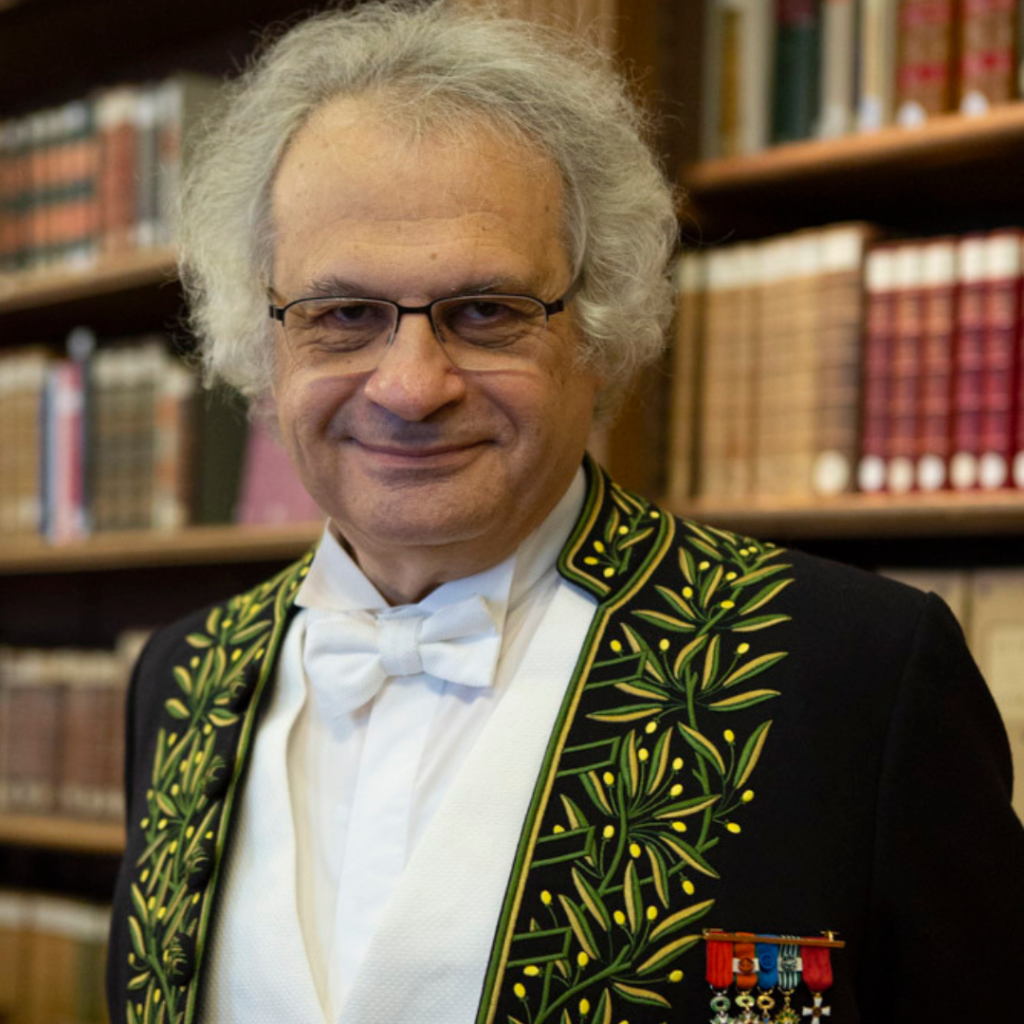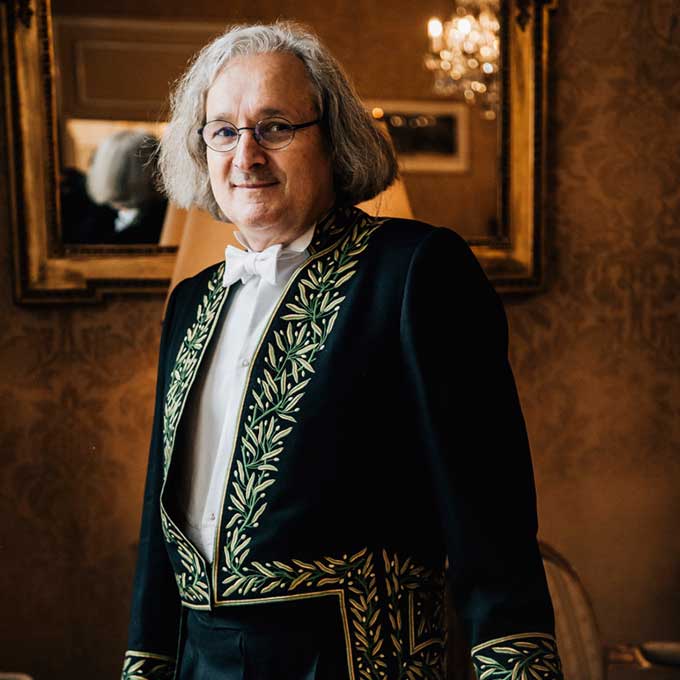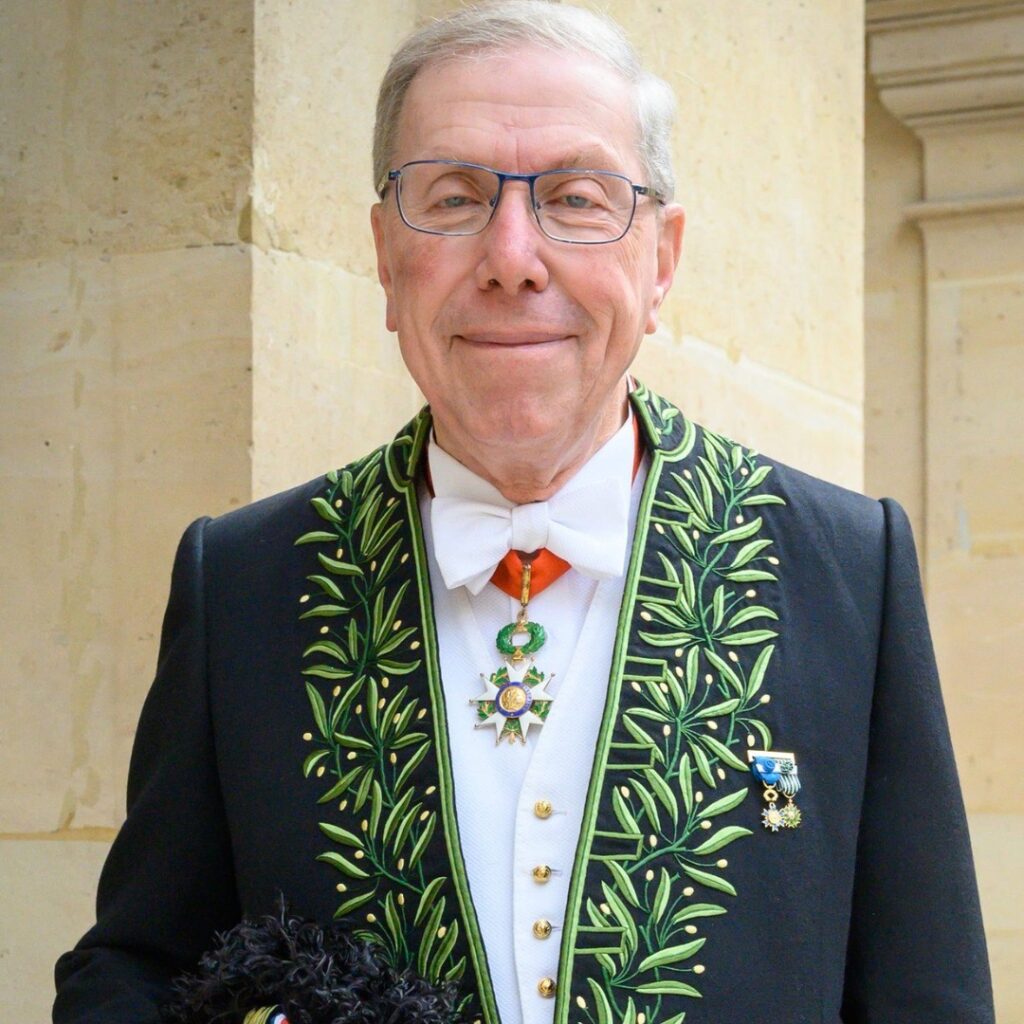Our
organization
The Institut de France has a unique legal status in French public law, as it is self-governed and independent. Instead, under the protection of the President of France, it reports solely to the Court of Auditors (Cour des Comptes).
The governing body of the Institut de France is composed of the Permanent Secretaries, two members from each Academy appointed annually by their organizations, and a Chancellor who is elected for a renewable three-year term. This leadership committee meets at least three times per year. The Chancellor ensures that the decisions made by the General Assembly, the leadership committee, and the independent committees are executed.
The presidency of the Institute is held on an annual, rotating basis by each Academy.
Chancellor of the Institut de France : Xavier Darcos (since 2018)
President of the Institut de France in 2024 : Académie des sciences
Leadership Committee as of the second trimester 2024 :
- M. Alain FISCHER, Président de l’Institut 2024
- M. Marc LAMBRON, Directeur de l’Académie française
- M. Charles de LAMBERTERIE, Président de l’Académie des inscriptions et belles-lettres
- M. Alain FISCHER, Président de l’Académie des sciences
- M. Adrien GOETZ, Président de l’Académie des beaux-arts
- M. Bruno COTTE, Président de l’Académie des sciences morales et politiques
- M. Xavier DARCOS, Chancelier de l’Institut
- M. Amin MAALOUF, Secrétaire perpétuel de l’Académie française
- M. Nicolas GRIMAL, Secrétaire perpétuel de l’Académie des inscriptions et belles-lettres
- M. Antoine TRILLER, Secrétaire perpétuel de l’Académie des sciences
- M. Etienne GHYS, Secrétaire perpétuel de l’Académie des sciences
- M. Laurent PETITGIRARD, Secrétaire perpétuel de l’Académie des beaux-arts
- M. Bernard STIRN, Secrétaire perpétuel de l’Académie des sciences morales et politiques
Organizational Structure
of the Institute
Structured initially by sections and subsequently by Academies
Dans son organisation d’origine
(loi du 3 brumaire an IV), l’Institut était divisé en trois classes
1795
The law of 3 Brumaire year IV created the Institut de France, comprised of 144 members divided into three sections:
Physical Sciences
and Mathematics
Literature and Fine Arts
Moral and
Political Sciences
1803
The Consular Edict of 3 Pluviôse an XI eliminated the Political and Moral Sciences sections and reorganized the Institut National de France into 4 new sections:
Physical Sciences
and Mathematics
French Literature
and Language
Ancient History
and Literature
Fine Arts
1815
Napoleon created a fifth section; Art History and Theory. The following year, the section became dedicated to independent members by the decree of Louis XVIII.
1816
The Royal Decree of March 21st, rebaptized each section of the Institute into Academies and created the Académie des Beaux-Arts, which combined the Académie Royale de Peinture et de Sculpture, the Académie Royale d’Architecture and to a certain extent, the Académie Royale de Musique.
Académie Française
Académie des Inscriptions
et Belle-Lettres
Académie des Sciences
Académie des Beaux-Arts
1832
The Académie des Sciences Morales et Politiques was reestablished by Guizot, minister of Public Instruction, under Louis-Phillipe (Royal Decree of October 26, 1832). The resulting structure, consisting of five academies, remains active today.
Académie Française
Académie des Inscriptions
et Belle-Lettres
Académie des Sciences
Académie des Beaux-Arts
Académie des Sciences
Morales et Politiques
Organizational Structure
of the Academies
The Academies are under the administrative, editorial and financial responsibility of a Permanent Secretary. The duration of the appointment of the Permanent Secretary differs for each Academy. For the Académie française, this is a lifetime position. The terms are variable and can be renewed for the other academies, depending on their bylaws. The Permanent Secretary is the official representative of their Academy to public authorities.

Each Academy has an Executive Committee who oversees their activities. It is composed of the President, the Vice President (Director and Chancelor of the Académie française and the Permanent Secretary (the Académie des sciences has two Permanent Secretaries); all are elected by their fellow Academicians.
The President, elected for a one-year term, assists the Permanent Secretary, as needed. The Vice President, also elected for a one-year term, deputizes for the President before replacing him or her the following year.
The Chancellor of the Institut de France and the Permanent Secretaries of the Academies

Xavier Darcos
Chancellor of the Institut de France

Amin Maalouf
Permanent Secretary of the Académie française

Nicolas Grimal
Permanent Secretary of the Académie des inscriptions et belles-lettres

Antoine Triller
Permanent Secretary of the Académie des sciences

Étienne Ghys
Permanent Secretary of the Académie des sciences

Laurent Petitgirard
Permanent Secretary of the Académie des beaux-arts

Bernard Stirn
Permanent Secretary of the Académie des sciences morales et politiques

Xavier Darcos
Chancelier de l’Institut

Hélène Carrère d’Encausse
Secrétaire perpétuel de l’Académie française

Michel Zink
Secrétaire perpétuel de l’Académie des inscriptions et belles-lettres

Pascale Cossart
Secrétaire perpétuel de l’Académie des sciences

Étienne Ghys
Secrétaire perpétuel de l’Académie des sciences

Laurent Petitgirard
Secrétaire perpétuel de l’Académie des beaux-arts

Jean-Robert Pitte
Secrétaire perpétuel de l’Académie des sciences morales et politiques
Découvrez les 471 académiciens au travers
de leurs parcours, leurs pensées et réalisations.
Rules and Regulations
Governance of the Institut de France and the five academies
- Institut de France –Foundation organizational chart from 1635 to 1889. Foundations Chart (1889).
- Institutions and regulations of the Académie Française, 1635, 1752, 1816 (in Statutes and Regulations).
- Regulations for the Académie des Inscriptions et Belle-Lettres, the statutes were approved by decree, n° 2017-1208 on August 1st, 2017 (JORF of August 2nd, 2017)
- Institut de France, Académie des Sciences – the statutes were approved by decree on May 2nd, 2002 et January 31st, 2003 *JORF of May 4th, 2002 and February 2nd, 2003).
- Statutes and regulations of the Académie des Beaux-Arts the statutes were approved by decree n° 2015-1739 of December 23, 2015 – (JORF of December 26, 2015).
- Regulations of the Académie des Sciences Morales et Politiques, the statutes were approved by decree n° 2018-867 of October 8th, 2018 (JORF of October 9th, 2018).
- Administration regulations of the Institut de France (1922 et 1953).
- Statutes of the Institut de France and financial and accounting regulations (2007).

